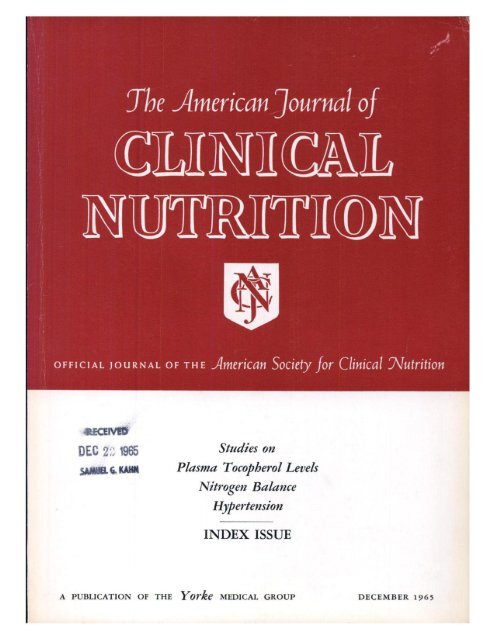Comparison of methods for estimating discretionary salt intake among females of reproductive age in Oromia region, Ethiopia
IF 6.5
1区 医学
Q1 NUTRITION & DIETETICS
引用次数: 0
Abstract
Background
Accurate and precise estimates of discretionary salt intake are essential to the design of salt fortification and sodium reduction interventions; however, there is limited methodological guidance for low-resource field settings.
Objectives
The objective of this study was to compare measures of association and agreement between the weighed food record (WFR) and 4 other methods for estimating daily discretionary salt intake among females of reproductive age (FRA) in the Oromia region of Ethiopia.
Methods
A total of 100 FRA were enrolled in a cross-sectional study that assessed discretionary salt intake using 5 approaches: 1) 1-d WFRs; 2) duplicate diet composites to assess the total sodium content of the diet and preparation of corresponding replicate diet composites excluding discretionary salt to measure the intrinsic sodium content of the diet in 40 participants; 3) 24-h urinary sodium excretion; 4) 1-d household salt disappearance; and 5) 1-wk household salt disappearance. WFR, 1-d household salt disappearance, and 24-h urine collections were repeated in a subset of 40 participants to estimate usual discretionary salt intake from observed discretionary salt intake. Correlation and Bland–Altman analyses were conducted to assess the association and agreement between the WFR and methods 2–5.
Results
Estimates of the mean ± SD discretionary salt intake ranged from 6.8 ± 1.9 g/d (WFR usual intake estimate) to 10.0 ± 7.3 g/d (1-d household salt disappearance per household member). One-day salt disappearance per adult female equivalent and per household member was most strongly associated with the WFR method (r = 0.675, P < 0.001 and r = 0.645, P < 0.001, respectively). The difference in mean discretionary salt intake was the smallest between the replicate diet composite and the WFR method (–0.58 ± 4.21 g).
Conclusions
The WFR method, our predefined reference method, with repeated assessments in a subgroup of participants likely yields the most precise and accurate estimation of actual discretionary salt intake. If resource constraints preclude this method, estimating salt utilization per household member via a 1-d disappearance study following preliminary WFRs to allow for potential adjustment may be an appropriate alternative.
估算埃塞俄比亚奥罗米亚地区育龄女性任意盐摄入量的方法比较。
背景:准确和精确地估计任意盐摄入量对于设计盐强化和钠减少干预措施至关重要;然而,对于资源匮乏的地区,方法指导是有限的。目的:本研究的目的是比较称重食物记录(WFR)和其他四种估计埃塞俄比亚奥罗米亚地区育龄妇女(FRA)每日任意盐摄入量的方法之间的关联和一致性。方法:100名FRA被纳入一项横断面研究,使用五种方法评估随意盐摄入量:1)一天称重食物记录;2)采用重复饲粮组合评估饲粮总钠含量,制备相应的重复饲粮组合,剔除任意盐,测量饲粮固有钠含量;3) 24小时尿钠排泄;4)一日家庭食盐消失;5)一周内家庭食盐消失。在40名参与者中重复WFR、一天家庭盐消失和24小时尿液收集,以根据观察到的任意盐摄入量估计通常的任意盐摄入量。进行相关性和Bland-Altman分析来评估WFR与方法2-5之间的相关性和一致性。结果:平均±SD随意盐摄入量的估计值从6.8±1.9 g/天(WFR通常摄入量估计值)到10.0±7.3 g/天(每个家庭成员一天的家庭盐消失)。每名成年女性和每名家庭成员一天的食盐消失量与WFR方法的相关性最强(r=0.675)。结论:WFR方法,即我们预先定义的参考方法,在一个亚组参与者中进行重复评估,可能产生最精确和准确的实际可自由选择的食盐摄入量估计。如果资源限制不允许使用这种方法,那么在初步wfr之后通过为期一天的消失研究来估计每个家庭成员的盐利用率,以便进行潜在的调整,可能是一种适当的替代方法。
本文章由计算机程序翻译,如有差异,请以英文原文为准。
求助全文
约1分钟内获得全文
求助全文
来源期刊
CiteScore
12.40
自引率
4.20%
发文量
332
审稿时长
38 days
期刊介绍:
American Journal of Clinical Nutrition is recognized as the most highly rated peer-reviewed, primary research journal in nutrition and dietetics.It focuses on publishing the latest research on various topics in nutrition, including but not limited to obesity, vitamins and minerals, nutrition and disease, and energy metabolism.
Purpose:
The purpose of AJCN is to:
Publish original research studies relevant to human and clinical nutrition.
Consider well-controlled clinical studies describing scientific mechanisms, efficacy, and safety of dietary interventions in the context of disease prevention or health benefits.
Encourage public health and epidemiologic studies relevant to human nutrition.
Promote innovative investigations of nutritional questions employing epigenetic, genomic, proteomic, and metabolomic approaches.
Include solicited editorials, book reviews, solicited or unsolicited review articles, invited controversy position papers, and letters to the Editor related to prior AJCN articles.
Peer Review Process:
All submitted material with scientific content undergoes peer review by the Editors or their designees before acceptance for publication.

 求助内容:
求助内容: 应助结果提醒方式:
应助结果提醒方式:


